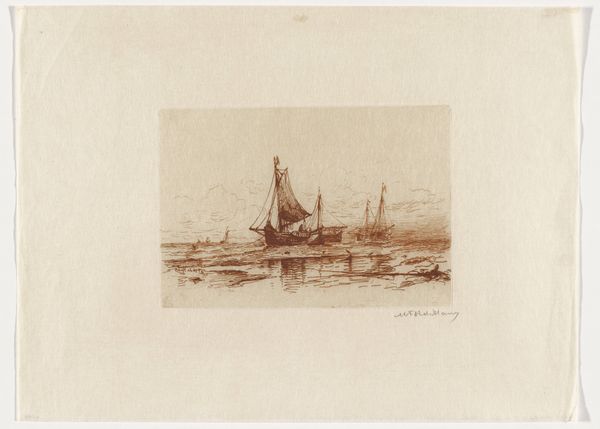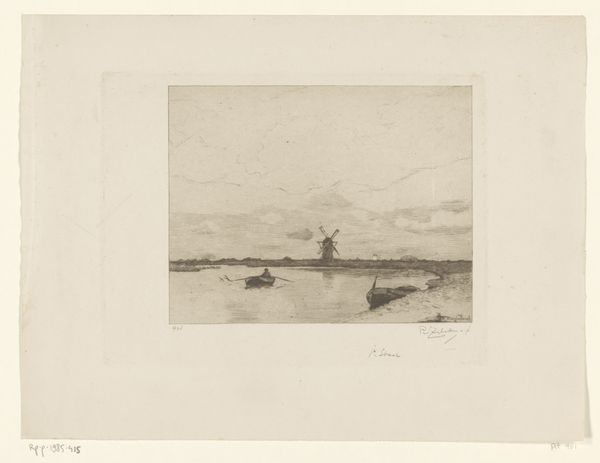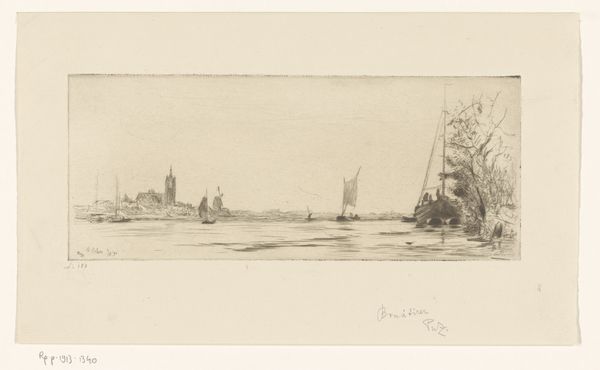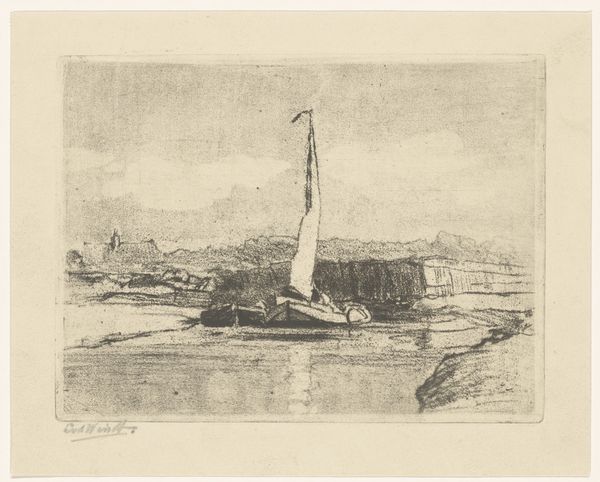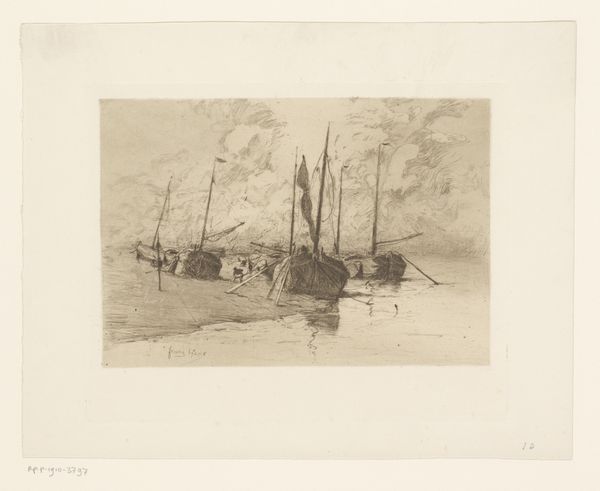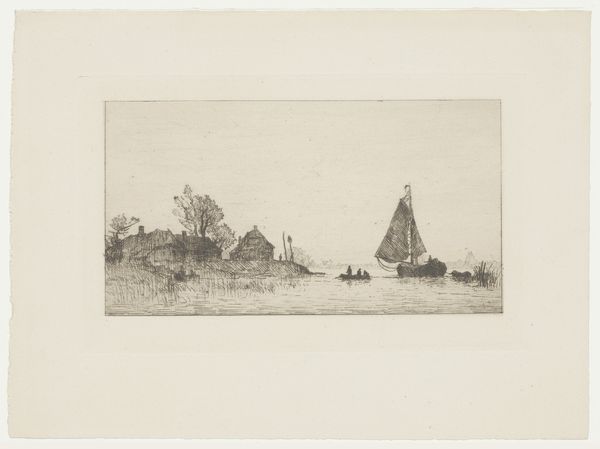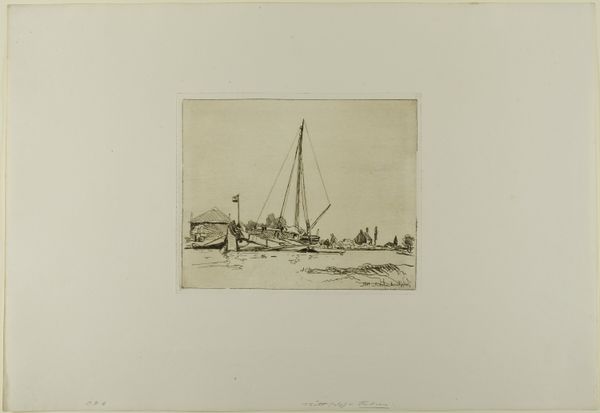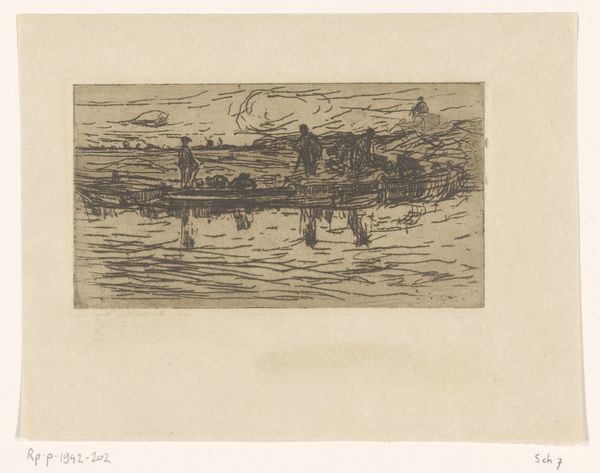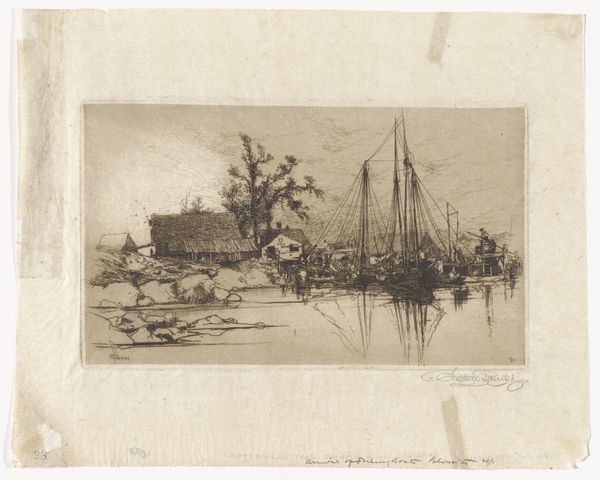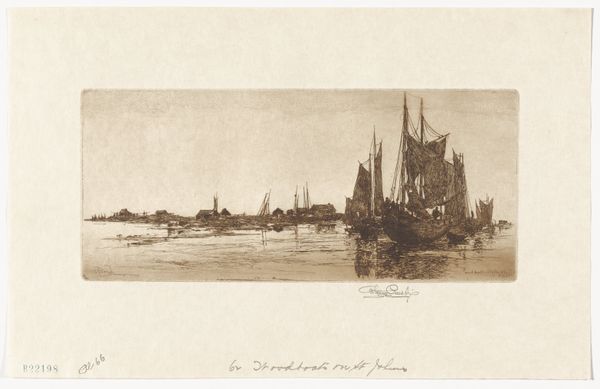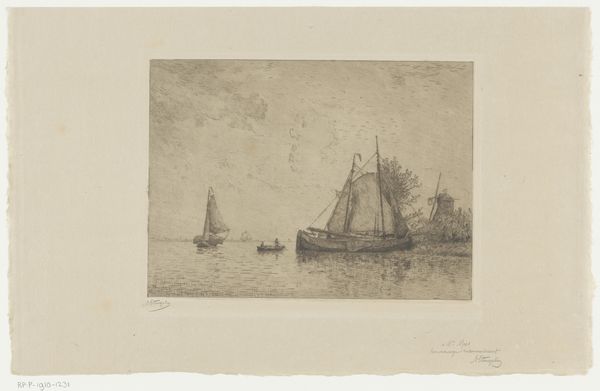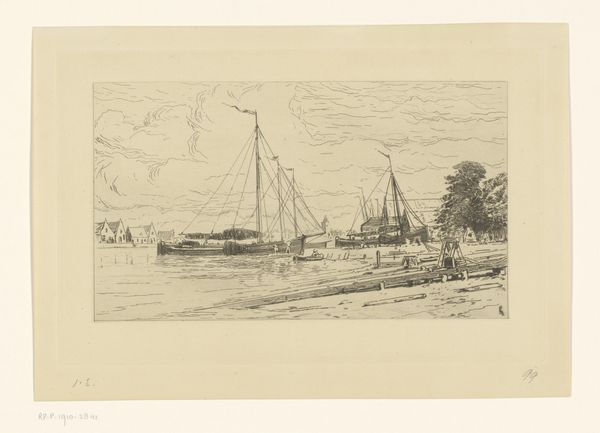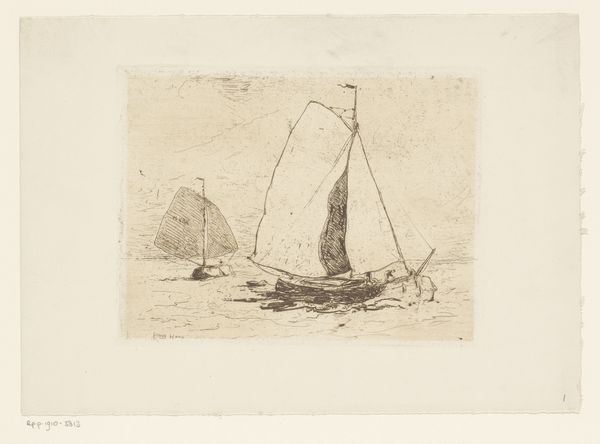
print, etching
# print
#
etching
#
landscape
#
etching
#
genre-painting
#
realism
Dimensions: 5 3/16 x 8 1/8 in. (13.18 x 20.64 cm) (plate)9 1/4 x 14 1/4 in. (23.5 x 36.2 cm) (sheet)
Copyright: Public Domain
Editor: We're looking at "A Fishing Hamlet," an etching by Stephen Parrish from around the 19th century, currently held at the Minneapolis Institute of Art. I'm struck by the textures—the roughness of the land and the delicacy of the water, all in monochrome. What catches your eye about this print? Curator: The print presents an intriguing interplay of light and shadow achieved through meticulous etching. Observe the careful gradations within the limited tonal range, a technique that adds depth and volume to the scene. How does Parrish employ line to define form, and does this structuring contribute to the work’s overall composition? Editor: I notice the lines are finer in the distance, giving a sense of atmospheric perspective. So the varying thickness and density of the lines create spatial relationships. Curator: Precisely. Note also how the dominant verticals of the masts intersect with the horizontality of the shoreline. It is through these contrasting axes that a dynamic balance is created. Would you agree that Parrish has consciously organized these elements to lead the eye around the composition? Editor: Definitely. The lines guide you from the boats in the center to the hamlet on the left and then further into the distance, creating a sense of journey through the artwork. It's all about the relationships between forms, creating space and depth. Curator: Yes, and furthermore, consider the print's materiality: the plate marks evident on the paper suggest the physical labor involved in the printmaking process. How does this tactile dimension inform your understanding of the artwork? Editor: I hadn’t considered that before. Knowing it's an etching adds a layer, recognizing the artist’s hand and craft so directly. This gives the print its intimacy, wouldn't you agree? Curator: Indeed. Through analysis of its formal components, the print becomes more than just a landscape, doesn't it? We have observed how materiality, form, line, and composition serve to elevate a quotidian scene to something worthy of consideration. Editor: It definitely does. Examining how Parrish uses these formal elements offers a richer, more meaningful experience with the work.
Comments
No comments
Be the first to comment and join the conversation on the ultimate creative platform.
